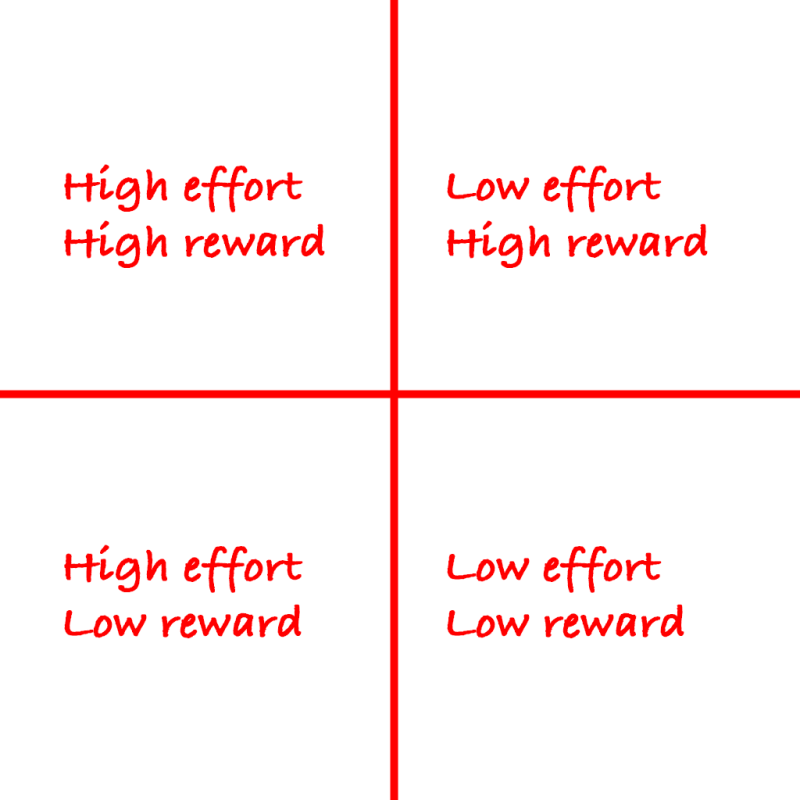I recently read an article by a respected DTC operator who was giving a perspective on improvement. He illustrated his thoughts by discussing a quadrant that looks like this:

As you examine this chart, it is pretty easy to see where DTC and E-commerce businesses should ideally be spending their time (upper right) and where they should avoid spending time (lower left). That was the DTC operator’s point, and I can’t really disagree with him, at least theoretically. If your business has low effort, high reward opportunities, that is where your focus should be.
The problem with that way of thinking though is that almost every successful business has long since exhausted almost all opportunities in the upper right. It is nice to think that those opportunities may exist (and they sometimes do), but generally speaking, they don’t. That is unpopular to say, but it is true. By the way, even if a company finds opportunities in the upper right, it is going to be crowded. Competition either already exists or is on the way. That is the nature of high-reward, low-barrier-of-entry opportunities.
I would like to suggest that what makes a company really successful and wildly successful is how it navigates the upper left and lower right quadrants. Those are the realms that are mastered by the giants of industry. And, those are the realms of companies that are great at operations.
One of the principles of the Capacify Doctrine is about improvement. Our belief about improvement is that all improvements do not have to be big and small improvements add up. While a 1% improvement may not move the needle much, a 1% improvement each week moves the needle a lot.
This aligns with approaches to operations such as Lean methodology, made popular by Toyota. Toyota knows that not many opportunities exist in the upper right. They grind it out in the other two profitable quadrants, and over time, improve an already great product. There is nothing easy about it but the results speak for themselves.
Here is the takeaway for small businesses: if you are already doing something successfully, think twice before you get distracted by “easy” initiatives that have the potential for high reward but take you away from your core strengths.
In other words, find a way to just keep fine-tuning what you already do well. Those incremental improvements will pay off hugely over time.